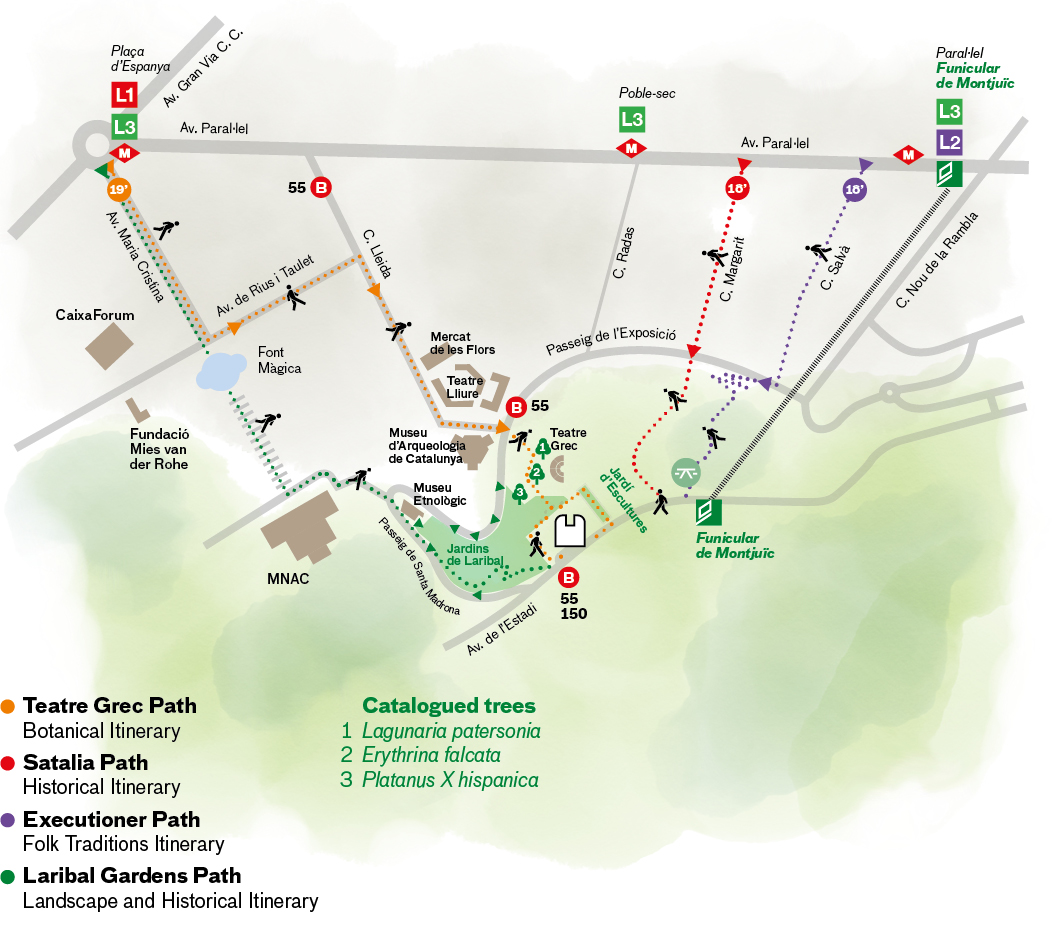The Paths to the Fundació Joan Miró










Montjuïc is a network of paths and trails that have criss-crossed the hill ever since ancient times. Iberian and Roman settlements, fortified farmhouses, quarries, wheat fields, vineyards and vegetable patches, shrines and chapels along with numerous fountains have sprung up over time along the hill’s many paths.
Now we propose venturing back onto some of these paths to discover the hill of Montjuïc and reach the Fundació Joan Miró on foot. It is an opportunity to enjoy art and nature from the very outset of your visit.

The diamond smiles at twilight. Joan Miró, 1947


Botanical Itinerary
If you are interested in botany or geology, this is the path for you. You will find fascinating, unique specimens such as Erithryna corallodendron, Lagunaria patersonii and the Banskia rose patches, as well as the old Machinet quarry that encloses the Teatre Grec.
Historical Itinerary
If you wish to wander through history down the Old Road to Valencia, take this path to the Fundació. It will lead you through narrow streets that wend their way up through the area’s old stone quarries, where you will discover the remains of the Font de la Satalia fountain tucked between ombú trees and acacias.
Folk Traditions Itinerary
Discover this little-known, wilder part of Montjuïc, heir to the vegetable patches that were watered with the local fountains, wells, and reservoirs scattered across the hill. This is the itinerary with the former picnic areas - the places where locals used to gather and cool water was served under the shade of fig and carob trees, with music and dancing as the main attractions.
Landscape and Historical Itinerary
If what you are looking to do is escape into a special setting, this is the place for it. You can discover hidden corners by exploring the ramps, stairs and paths between the waterfalls and fountains that water the most fantastic Mediterranean, exotic and hundred-year-old species in the park.
Over a century ago, Montjuïc, mostly bare of vegetation, was an attraction for working-class people who walked up the hill in search of cleaner air than what they breathed in the dense, dark, noisy, dirty city. On foot or in horse-drawn carts, entire families of city-dwellers would head up in search of the shady, cool corners by the many water fountains and other areas that became leisure and gathering spaces.
The leisure spaces were cultural meeting points: dancing, singing, theatre, food, games or literary activities were the focus of attention, just as the trees, the flowers, the birds, the water, the sun, the insects and the rocks set the stage.
Some of these historic paths have disappeared, whereas others have changed their routes; some have lived on until today, preserving the atmosphere of the past and inviting us to rediscover and enjoy them from a current-day perspective.